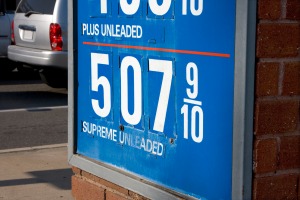
We're facing $4-per-gallon gasoline this year, oil-industry watchers tell us. Meanwhile, a former president of Shell Oil says that prices could reach $5 per gallon in 2012.
Already there's a rising spirit of panic among American consumers. Some will be tempted to dump their current cars for more fuel-efficient models, while others will fall prey to the latest gizmos and concoctions from the auto parts store.
Don't be one of them.
What makes sense is to think about the way you use your car. Then change your driving habits. If you decide that you need a new car, shop smart for a fuel-efficient model. Strategy is what you need, so we've organized a number of sensible measures that will let you ride the rising tide of gasoline prices with minimal distress.
Behind the Prediction
As the chief of Shell Oil's operation in the U.S. from 2005-'08, John Hofmeister has some tough things to say about energy policy in America. Now the head of Citizens for Affordable Energy, a nonprofit advocacy group that he founded, Hofmeister tells Edmunds that the U.S. is headed for record-high gasoline prices if it continues to produce only 7 million barrels of oil in the U.S. per day, since the nation actually uses 20 million barrels per day.
Put such limited supply together with U.S. demand that has now reached the same extreme levels that we experienced before the business recession, plus what Hofmeister describes as "unprecedented" increased demand in Asia, and the result is higher crude oil prices. He says, "It's my expectation we'll see retail prices of $4 per gallon in 2011 and it could get to $5 in 2012."
Compared to the previous escalation of gas prices in 2008, Hofmeister notes that the reaction to the price jump will be "greater panic and greater distress." That's because the budgets of American families have already been hammered by the ongoing recession. For example, real median household income fell 4.2 percent between 2007 and 2009, according to the U.S. Census Bureau. Gas price increases "will be dramatically more frightening to people, particularly those who are at or near median wages in this country," Hofmeister tells us.
Survival Strategies for Car Owners
So that's the doom-and-gloom scenario. Here is some advice from Edmunds experts on how to cope:
- Figure out the mileage you get in the cars you drive now: This will help you see the actual impact of the price increases, measure any improvements you attain by changing your driving patterns and help you decide whether it would make sense to move to a more fuel-efficient car. In addition to paper-and-pencil recordkeeping, you can use online sites such as Fuelly.com to track mileage and gasoline costs online.
- Realistically assess what rising gas prices mean to your family. The impact might not be as dire as you think. Or if gas prices do threaten to sink the budget, it might be time to reexamine how your household is spending money overall.
- Save fuel by changing your driving style and attending to simple car maintenance: Edmunds editors have rigorously tested driving styles, aerodynamics and some basic car-maintenance steps to measure their effect on fuel economy. By far, the largest fuel-saver was a switch to calm driving. Compared to a fast, lane-changing, sharp-braking style, calm driving improved fuel economy by 35 percent. Driving on underinflated tires lowered fuel economy by an average of 3.75 percent.
- Get the big picture on gas prices. Use sites such as Gasbuddy.com to check prices in your area, but don't drive across town to save a few pennies. Some other strategies for minimizing the cost of gas include using cash-back gasoline credit cards (which you should pay off monthly), or getting gas at membership stores such as Costco or Sam's Club.
- Don't immediately dump your gas-guzzling SUV: That instinctive reaction could cost you money. As Senior Consumer Advice Editor Philip Reed points out, the resale value of an SUV drops "as fast as the needle on its gas gauge" when gas prices are high. The taxes and fees on new cars are considerable. And the demand — and thus prices — for fuel-efficient cars tends to climb along with gas prices. If you still have the urge to switch to a more fuel-efficient car, use this gas-guzzler calculator to assess how long it will take for the switch to pay for itself.
- Don't buy "gas-saving" devices. Most of them don't work, according to the Environmental Protection Agency (EPA). The EPA's list of the top 10 misconceptions about fuel economy is also instructive. Manual transmissions don't always deliver better mileage than automatics, for instance.
New Choices, Shopping Challenges for New Car Buyers
In some ways, Americans may be in a better position in 2011 to deal with expensive gasoline — at least as far as the availability of fuel-efficient vehicles is concerned. Auto manufacturers are driven by federal mandates to build more cars that get better mileage, and some of those efforts are arriving just in time for the predicted gas price crisis. There were 16 hybrid cars on the market in August 2008, according to Edmunds research. As of December 2010, there were 34 hybrid vehicles available to car buyers.
Carmakers also have improved the efficiency of their conventional vehicles. A 2008 Honda Accord had a combined city/highway rating of 24 miles per gallon. The 2011 model gets 27 mpg combined. Automakers have achieved even better results with diesel versions of some models. The 2008 Volkswagen Jetta had a combined mpg of 24. The 2011 Jetta diesel betters that by 10 mpg, achieving 34 mpg. Even the Toyota Prius upped its fuel efficiency. It had combined mpg of 46 in 2008. In 2011, it's getting 50 mpg combined, and it tops the EPA's list of the most fuel-efficient 2011 models. Even the gas-gulping, best-selling Dodge Ram Pickup 1500 has bettered its fuel efficiency a bit, from 15 mpg combined for the 2008 model to 16 mpg for the 2011 model year.
The fuel-efficiency landscape also is radically different in 2011 because of the availability — on a limited basis, so far — of the all-electric Nissan Leaf (99 mpg equivalent and the plug-in hybrid Chevrolet Volt (60 mpg for "combined/combined" driving, meaning electric/gas engine and city/highway modes).
In Hofmeister's view, such cars won't help the vast number of American drivers. "There may be some well-to-do people who are moving down the path of alternative vehicles, but that's a very small number. The ones who are most impacted are the ones who can't afford hybrids or battery-powered cars to begin with."
If you're in the market for a car, Edmunds experts offer these strategies:
- Do your fuel-efficiency homework before you shop: The 10 most fuel-efficient vehicles for the 2011 model year can be found on the EPA's list. For 2010 models, take a look at Edmunds' Top 10 most fuel-efficient vehicles for that model year. Many of the vehicles also are available as 2011 models with equal or even slightly better fuel efficiency: Top 10 Most Fuel-Efficient Non-Hybrids for 2010, Top 10 Most Fuel-Efficient Hatchbacks and Wagons of 2010, Top 10 Most Fuel-Efficient Trucks of 2010, Top 10 Most Fuel-Efficient SUVs and Crossovers of 2010 and Top 10 Most Fuel-Efficient Sedans of 2010.
Also, check the results of Edmunds' tests of several renowned fuel-sippers from the 2010 and 2009 model years, including the Honda Insight, Mini Cooper, Prius and Volkswagen Jetta TDI. Another test put some SUVs through their fuel-economy paces.
Shop smart for fuel-saving cars: When gas prices spike, so do the sales of small, fuel-efficient cars. In February 2008, when gasoline was $3.03 per gallon, small cars had a market share of 17.9 percent, according to Edmunds data. By May, as gas prices rose to $3.77, small-car market share grew to more than 27 percent. At the peak gas price of $4.08 in July 2008, small cars accounted for 24.4 percent of sales. More recently, in December 2010, Toyota Prius sales topped 15,000, driven by unseasonably high gas prices and generous incentives, says Edmunds Analyst Ivan Drury. That was the highest monthly sales figure since the Cash for Clunkers sales spike in the summer of 2009. It can be frenzied out there, so prepare with these tips and tactics for buying a fuel-efficient car. They can shield you from an overheated sales environment.
- Consider something smaller: "Some peoples' lifestyles demand a larger vehicle. But those who can switch to a smaller vehicle will often find that they save money on the purchase of the vehicle, on fuel costs and on maintenance — all with only a slight trade-off in size," says Edmunds Consumer Advice Associate Ron Montoya.
- If you really do need something bigger, take advantage of this buyer's market: If you need a new SUV big enough to haul around your youth hockey team, or a large heavy-duty truck for work, a gas spike could be the very time to buy. Lots of people will panic and dump their big, burly vehicles. And some dealers will be stuck with new large vehicles that are suddenly hard to sell. When gas prices skyrocketed in the summer of 2008, dealers priced large SUVs and large trucks at 20-23 percent off their manufacturer-suggested retail prices, Drury says.
If we do indeed hit $4 per gallon again, that's the time to strike, Drury says. He suggests identifying the vehicle you have in mind online and tracking it as it ages on a dealer's lot. The discounts go deeper the longer the vehicle sits.
"If you're looking at it and it's past 60 days, that's good," he says. Past 90 days is even better, "Ninety-plus days is bad for dealerships."
There are winners and losers when gas prices rise. Have a plan to make sure you're on the winning side this time.







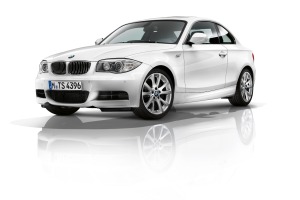

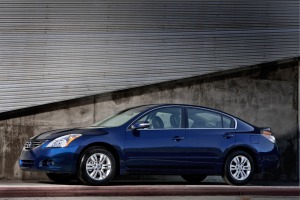
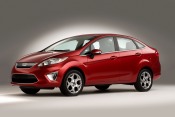
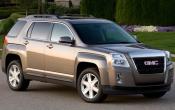
Most Recommended Comments
By artyirish
on 02/07/11
4:05 PM PST
You think the price of gas is bad now, wait until 2012 when it will hit $5 a gallon, it’s going to get worse. My friends, family and I get 40% off on gasoline because we joined a savings program. I started this program two months ago and I’m saving 40% at the pump every time I fill up my car and I’m telling everybody. We are going to see more and more new stories about rising gas prices, if you want to take control of what you spend on gasoline, then watch this video and learn how to start saving 40% on gasoline. ARTY
Recommend (88) (20)
Report It